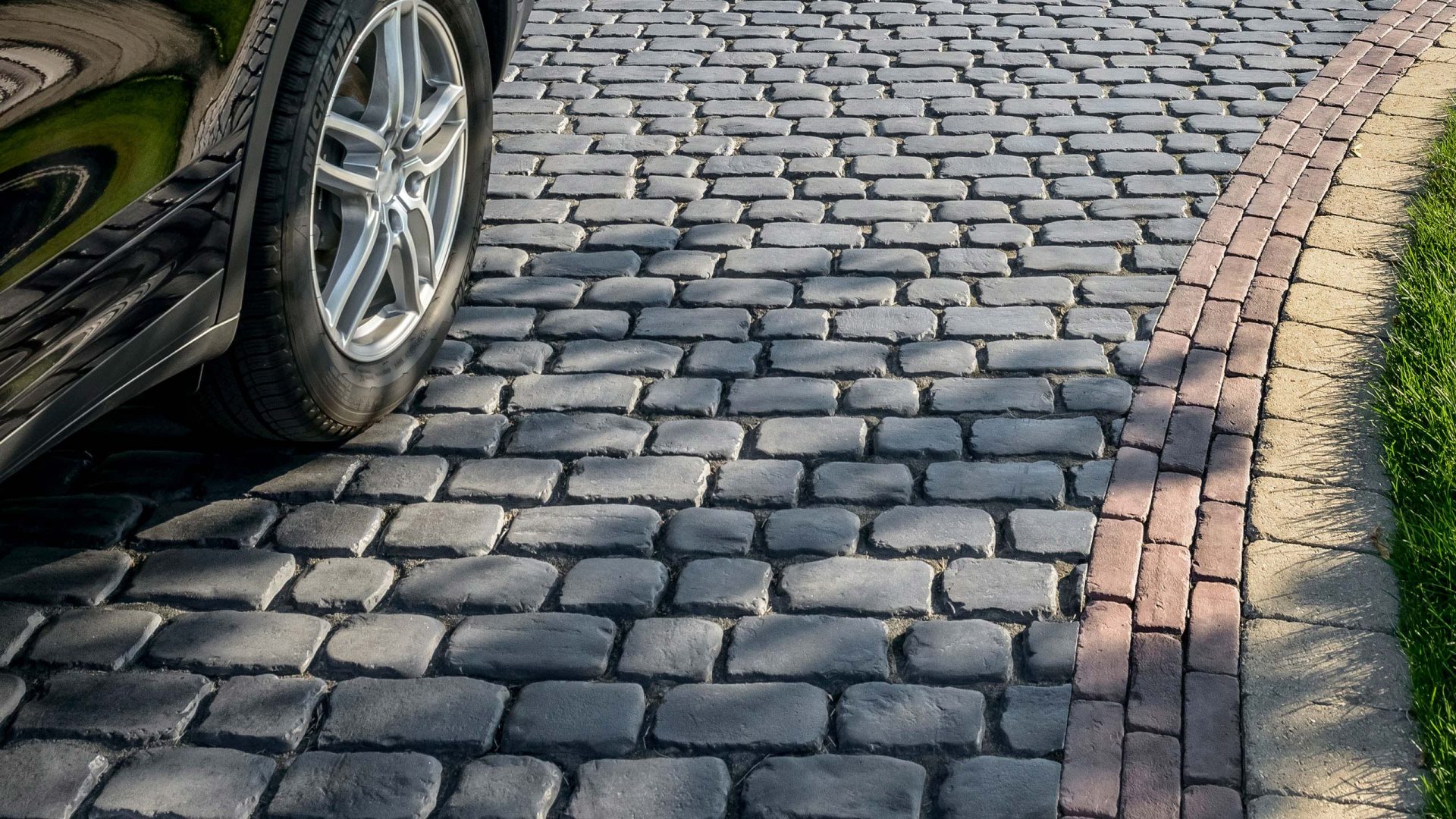Stamped concrete vs pavers are two popular options for outdoor spaces, each with its unique characteristics, but deciding between them can feel like navigating a maze. Both options are visually appealing and durable, but they come with their own set of benefits and drawbacks.
Both of the hardscaping materials can transform your outdoor area into a stunning space. Yet, installation time, decorative flexibility, cost, and maintenance requirements differ.
In this article, we will explore the features, advantages, and drawbacks of both, helping you make an informed decision for your project.
What Is Stamped Concrete?
Stamped concrete is a type of concrete that is patterned or textured through a unique technique that imitates higher-end materials like natural stone, brick, and even wood, offering a cost-effective yet attractive solution.
We have written an in-depth article about stamped concrete pros and cons and everything that you need to know before installation.
What are Pavers?
Pavers, essentially, are paving stones, tiles, or bricks used to create outdoor flooring. They come in various materials like concrete, brick, natural stone, and porcelain, offering a broad spectrum of aesthetics and functionalities.
Pavers vs Stamped Concrete Patios
When looking to perform outdoor renovations, the debate between patio pavers and stamped concrete patios stands out. As I’ve navigated through both options for my own home, I discovered key insights that could sway your decision. Let’s break down the essentials to consider when choosing between these two popular materials.
You may also like:
Color Durability
When it comes to color durability, concrete pavers have a significant advantage. The color in concrete pavers is integrated throughout the paver, making it more resistant to fading and wear.
Stamped concrete, while offering a broader range of colors, only has a color and pattern layer on the top. Over time, this surface layer can wear away or chip, revealing the natural concrete color beneath. This means that for lasting vibrancy, pavers might be the better choice.
Strength Comparison
In terms of strength, there’s a clear difference between the two. Concrete pavers boast a remarkable strength of 8000 PSI or greater, significantly higher than stamped concrete’s average of 3000-4000 PSI.
This higher PSI not only means that pavers are more resistant to cracking but also that they hold up better under heavy traffic and constant freeze-thaw cycles.
Pavers vs Stamped Concrete Strength Comparison Table
| Material | PSI |
|---|---|
| Concrete Pavers | 8000 or more |
| Stamped Concrete | 3000-4000 |
Design Versatility
Design versatility is another crucial factor. Stamped concrete offers various design options, allowing for various colors and patterns that can mimic natural stone, brick, or wood. However, stamped concrete designs are somewhat limited by the availability of stamps and could be costlier for unique designs.
Conversely, pavers come in diverse shapes, colors, and sizes, facilitating endless configuration possibilities without the high cost of customization.
Stamped Concrete vs Paver Cost Comparison
Installation Considerations
Installation costs can vary greatly between pavers and stamped concrete, depending on your location and project complexity. Generally, materials and installation for stamped concrete over a concrete pad are approximately half the cost of pavers.
However, pavers, being unable to be created onsite, might incur additional costs for shipping and delays in supply lines.
| Material | Average Cost (Per Square Foot) |
|---|---|
| Concrete | $5-15 |
| Brick | $8-20 |
| Natural Stone | $10-30 |
Maintenance Considerations
Maintenance is a critical aspect to consider. Stamped concrete, while offering aesthetic appeal, requires more upkeep to maintain its look, including periodic sealing to reduce fading and repairs for any cracks that appear.
Pavers, on the other hand, are easier to maintain. Should a paver break, it’s easy to replace a single piece rather than having to tackle an entire section.
Overall Comparison:
| Aspect | Stamped Concrete | Pavers |
|---|---|---|
| Cost | Lower initial cost | Higher initial cost |
| Design Options | Versatile but somewhat limited | Extensive variety |
| Durability | Durable with potential cracks | Highly resistant to cracking |
| Maintenance | Moderate | Requires periodic attention |
| Installation Complexity | Complex, often requires pros | Relatively straightforward |
The Verdict
Ultimately, the best choice depends on your unique needs and priorities. Consider your budget, desired aesthetics, flexibility requirements, and environmental concerns.
If you crave maximum design freedom and affordability, stamped concrete might be your match. If longevity, low maintenance, and a natural look are your priorities, pavers could be the perfect path.

John Brown
John Brown brings a wealth of experience and passion for DIY, Home and Garden, and Woodworking. With a dedication to empowering enthusiasts, he shares insights, tips, and comprehensive guides to help you transform spaces and master woodworking skills.

